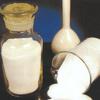- Welding Rods[9]
- Mining Machinery[2]
- Amine[4]
- Pressure Cookers[9]
- Frozen Vegetables[2]
- Pigment[2]
- Electric Irons[1]
- Lubricant[1]
- Chemical Auxiliary Agent[3]
- Food Additives[10]
- Compound Fertilizer[1]
- Adhesives & Sealants[1]
- Other Non-Metallic Minerals & Products[1]
- Oxide[2]
- Daily Chemicals[1]
- Other Steel Products[2]
- Other Mining Machinery[2]
- Loaders[2]
- Special Transportation[1]
- Dump Truck[1]
- Kidney Beans[6]
- Peas[2]
- Canned Vegetables[1]
- Melon Seeds[2]
- Broad Beans[4]
- Other Beans[2]
- Other Food & Beverage[10]
- Oil Seeds[6]
- Other Grain[1]
- Animal Feed[1]
- Dried Vegetables[10]
- Single Spices & Herbs[2]
- Vegetable Seeds[4]
- Other Metals & Metal Products[3]
- Stainless Steel Wire[1]
- Organic Acid[1]
- Starch[4]
- Polymer[1]
- Apricot Kernels[3]
- Pumpkin Kernels[1]
- Fruit & Vegetable Snacks[2]
- Sunflower Kernels[2]
- Contact Person : Ms. Xiaolan, Wang
- Company Name : Gansu Provincial I/E Trading Group Corp.
- Tel : 86-931-8615797,8635763,13909313553
- Fax : 86-931-8764479,8618187
- Address : Gansu,Lanzhou,No.50 Hongxing Lane
- Country/Region : China
- Zip : 730000
Dicyandiamide - DCDA
Dicyandiamine (Dcda)
Product Identification
CAS NO 461-58-5 EINECS NO. 207-312-8 FORMULA H2NC(=NH)NHCN MOL WT. 84.08 H.S. CODE 2926.20
TOXICITY
SYNONYMS Cyanoguanidine; 1-Cyanoguanidine; Dicyandiamide; Dicy; DCD; N-Cyanoguanidine; Dicyandiamin (German); Cyanguanidin (German); Cianoguanidina (Spanish); Cyanoguanidine (French);
DERIVATION
CLASSIFICATION CYANAMIDES / GUANIDINES /
PHYSICAL AND CHEMICAL PROPERTIES
PHYSICAL STATE white crystalline powder MELTING POINT 208 - 211 C BOILING POINT SPECIFIC GRAVITY 1.4 SOLUBILITY IN WATER soluble (4.13 g/100 ml) pH VAPOR DENSITY AUTOIGNITION NFPA RATINGS REFRACTIVE INDEX FLASH POINT Not considered to be a fire hazard STABILITY Stable under ordinary conditions
GENERAL DESCRIPTION & APPLICATIONS
Cyanic acid (the isomer of fulminic acid) is an unstable (explosive), poisonous, volatile, clear liquid with the structure of H-O-C¡ÕN (the oxoacid formed from the pseudohalogen cyanide), which is readily converted to cyamelide and fulminic acid. There is another isomeric cyanic acid with the structure of H-N=C=O, called isocyanic acid. Cyanate group (and isocyanate group) can react with itself. Cyanuric acid (also called pyrolithic acid), white monoclinic crystal with the structure of [HOC(NCOH)2N], is the trimer of cyanic acid. The trimer of isocyanic acid is called biuret.
Cyanic acid: H-N=C=O or H-O-C¡ÕN Fulminic acid: (H-C=N-O) or H-C¡ÕN-O Isocyanic acid: H-N=C=O Cyanuric acid: HOC(NCOH)2N Biuret: (NH2)CO)2 NHSpecifications: 1) Purity: 99.5% min.2) Moisture: 0.20% max.3) Density: 1.40g/cm34) Ash content: 0.05% max.5) Melting point: 209 - 2126) Ca: 200ppm max.7) Fe: 10ppm max.8) It could be used to produce melamine, and intermediate pans of synthetic drug, pesticides and coloring agents9) Also can be used to produce guanidine nitrate, sulfanilamide, sulfocarbamide, rubber accelerators, hardening of steel, fixing agentsof dye printing, sizing agents, and compound fertilizers
Dicyandiamide - DCDA




